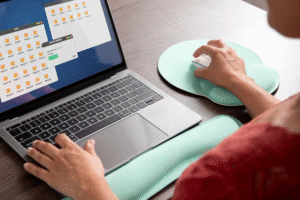Did you know that every button on a website can change a user’s decision? According to studies, a clear and strong call to action (CTA) button can increase sales by 30%. But just pressing a button wasn’t enough. The way it is made, its color, its placement, and its words are all important. Today, we will learn how you can create Call-to-Action buttons on your website that compel users to take action. The purpose of web design is not just to look good. Our main goal is to guide customers. If your button is not strong, the user gets confused and bored with the site.

Effect Of Call-to-Action Button on Website
The purpose of the CTA button is simple. What to do for user guidance. It is a small place, but its impact is huge. Every page should have a CTA, so that the user doesn’t have to decide what to do next. When a user is viewing a product or content, they want to be shown the next step. Use a Call-to-Action button to convey this. If the button is strong enough to fill out a user form, buy the product, or sign up. These Call-to-Action buttons encourage users to sign up, consider purchasing a product, and fill out a form. For this reason, a CTA button is important for every e-commerce or blog website.
Give A Clear and Strong Message
Call-to-Action button wording makes an impact. Use simple words. Such words compel the user to take action. If the wording of the button is unclear or ambiguous, the user will not click. For example, “Download now” is more powerful than “Click here”. Similarly, “Get Free Guide” is more specific than “Learn More”. The button’s message should always be clear and benefit-oriented. Tell the user what they will get from using it. When you design a Call-to-Action, you need to think about what the user is getting. Every word should be meaningful. Words should be given a touch of urgency or value. This makes it more likely for the user to take action.

Call-to-Action Button Design and Functionality
Both the design of the Call-to-Action button and its functionality are important. If the button is visible but not clicked, it appears to have failed. The design should have contrast so that the buttons stand out from the rest of the page. It should be sized so that the user can easily click on it. The text on the button should be legible and concise. The background and button colors should have an adequate contrast, so that the user’s attention is drawn to the button. The hover effect is also useful. A light animation or color change attracts the user when the user hovers over the button with the mouse. All these little things bring the Call-to-Action button to life. Functionality should also be tested on each device and screen size. The button should be responsive.
The Effect of Call-to-Action Button Colors – A Comparison Table
Colors influence user actions. Every color has a psychological effect. Some common colors and their effects on consumer behavior are given in the following table.
| Color | Content | Action Tendency |
| red | Urgency, power | Quick decision making |
| green | Trust, calm | Sign up or purchase |
| blue | Health, strength | Sign up and get information. |
| orange | Vigor, energy | Click to purchase or CTA. |
| yellow | Optimism, focus | Fill out the form or alert CTA |
From the table you can understand that each color has its own effect. Think about your brand and process when choosing your CTA button color. Each color affects the user’s mood and confidence level. Therefore, the use of colors in the design should be very thoughtful. If your Call-to-Action for a deal or limited-time offer is red or orange, use it. If you want to exude confidence, it’s best to stick to blue or green.
Placement And Timing of the CTA Button
Placing the CTA button in the right place and showing it at the right time is very important. A button pressed in the wrong place or at the wrong time causes the user to ignore it. Use a CTA when the user is interested in something. The hero section should have the first button. Using a CTA helps take the next step when the user is engaged with the content. At the end of the product, when the user clicks on the CTA, it leads to the final action. In a pop-up, you can stop using the CTA after the user exits. At the end of the blog, if the user wants to read more, they can go to the newsletter or free guide using the CTA tab. This makes the space and time buttons more efficient. The goal of the ubiquitous CTA is to engage and convert the user.

CTA Button Testing and Optimization
Not every CTA works for every website. You have to test what is working and what is not. This process is called A/B testing. You can test the button’s text, its size, its color, its location, and its hover effect. Testing gives you an idea of real user behaviour. Then you can have the best-performing CTA. This is important for SEO and conversion. When you improve your CTA, you also improve the user experience. Your sales and leads are growing. CTA performance should be checked on a weekly or monthly basis. If any button has a low CTR, it should be changed or improved. The purpose of each CTA should be clear. If the objec
Conclusion
A Call-to-Action button may seem like a small thing, but it has a huge impact. This button decides the user’s action. If it’s in the right design, text, and color, the user clicks immediately. If it’s false, the user steals the site and runs away. You should test each Call-to-Action, optimize it, and design it according to your branding and user journey. If you follow the tips in this article, both your website performance and sales can improve. Call-to-Action plays a central role in both web design and SEO. With this strategy, you engage customers and convert them into loyal customers. It is important to consider the user’s needs and mindset while designing each Call-to-Action.
